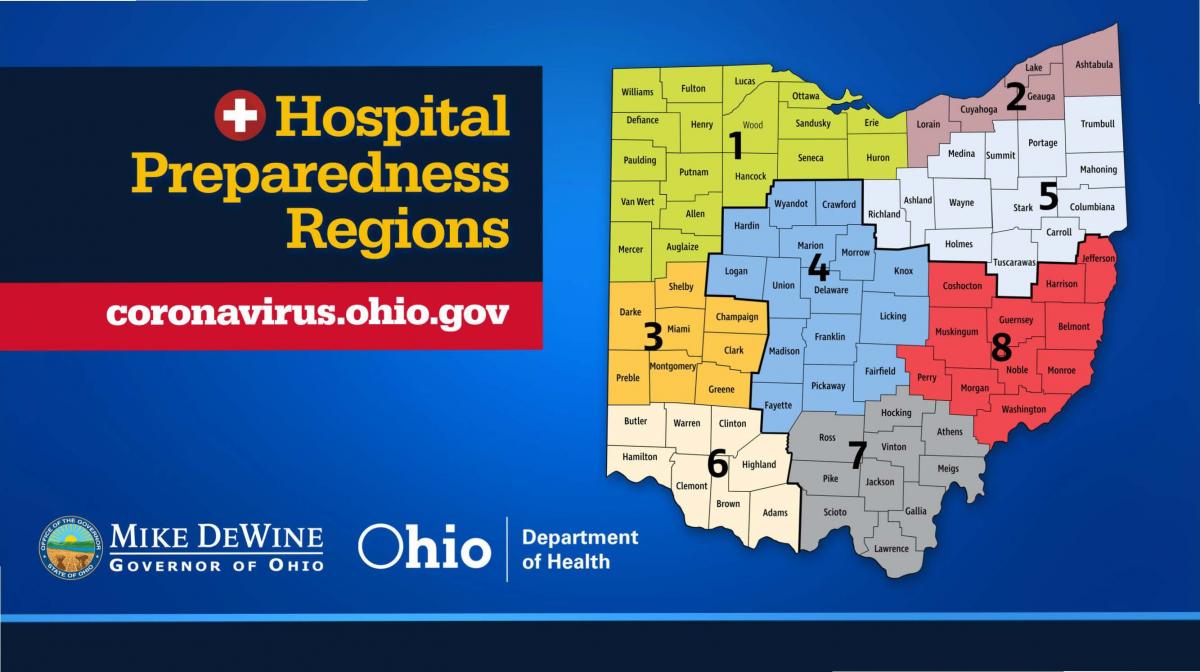Medical & Dental Health Care ReStartOhio
On April 27, 2020 Governor DeWine announced the next steps for restarting Ohio’s healthcare system to include the restarting of healthcare procedures and reopening of hospitals and outpatient facilities, dentist offices, and veterinary clinics. On March 17, Ohio Department of Health (ODH) Director Amy Acton, M.D., MPH, issued an order for the postponement of non-essential medical procedures. On May 1, a new order took effect to include the following to ensure that Ohioans are getting their healthcare needs met:
- All healthcare procedures that do not require an overnight stay in a hospital may move forward.
- This includes regular doctor visits, well-care checks, well-baby visits, outpatient surgeries, diagnostic testing and imaging, dental procedures, and veterinary visits.
- Anything that requires hands-on care in a doctor, dentist, or veterinary office that does not require an overnight stay, may move forward.
- Telehealth services should continue to be utilized if possible.
- Prioritization should be given to those who have delayed needed procedures or those with new diagnoses.
Effective at 11:59 p.m. on April 30, 2020, medical providers, including dentists, in the State may resume non-essential surgeries and procedures. This type of health care typically does not require an inpatient or overnight stay. These surgeries, procedures and other health care services, that utilize minimal personal protective equipment (PPE) have a minimal impact on inpatient hospital bed capacity, may resume only if the provider meets the following conditions:
- The provider follows infection control and other environmental practices in accordance with the ODH and CDC guidelines;
- The provider maintains adequate inventories of PPE, supplies, equipment, and medicine in their facility for each patient, considering all phases of care the patient may require,
- The provider creates a plan for conservation and monitoring that may include decontamination and reuse protocols to preserve PPE, supplies, equipment, and medicine to be prepared for an influx of patients, including those who do not have COVID-19;
- The provider evaluates access to a reliable supply chain to support continued operations for non-COVID-19 cases, and to respond to an unexpected surge in COVID-19 cases in a timely manner;
- The provider frequently counts PPE inventory. For hospitals, this information will continue to be reported to the State's COVID-19 resource management system on a daily basis;
- The provider defines processes for timely COVID-19 testing of patients and staff in accordance with the ODH guidelines;
- The provider continues to use telehealth modalities whenever possible; and
- The provider develops an actionable plan for communication, outreach, and equitable delivery of services that:
- Recognizes the underlying social determinants of health and the disproportionate impact of COVID-19 on minority populations;
- Engages patients in discussion regarding the risk of contracting COVID-19; and
- Engages patients in shared decision making regarding the need for and timing of health care services. Surgeries and other procedures could still be delayed based upon mutual decisions made by patients and their clinicians.
As a provider prepares to restart non-essential health care services, hospitals and other providers should review the following types of considerations:
- Pre-restart considerations;
- Prioritizing patient outreach and scheduling;
- Patient Communication;
- Patient Screening for COVID-19;
- Facility Considerations;
- Workforce/Staffing;
- Sanitation Procedures;
- Personnel Protective Equipment;
- Supplies;
- Patient and Staff Testing; and
- Consultation of additional Resources.
Providers should continue to use telehealth modalities, whenever possible, and create or use existing internal strategies to prioritize cases based on the medical staff’s governance and resolution structure.
Providers should also follow the Responsible Restart Ohio Guide for Health Care distributed by ODH.
Responsible ReStart Ohio Health Care & Hospital Sector Specific Guidance
Governor DeWine’s plan for restarting health care services balances the need to ensure the health and safety of all Ohioans – including those working in health care and those who need to access health care services – and the unpredictability inherent in managing the COVID-19 pandemic. It also considers the underlying social determinants of health and the disproportionate impact of COVID-19 on minority populations.
The Responsible RestartOhio Guide for Health Care is designed to provide insight and best practices to resume non-urgent health care services across the state through a stepwise approach. This guide is intended to be a resource for patients, providers, health systems and Ohio’s COVID-19 Three Zone response infrastructure as the state begins to resume typical standards of health care. The complete plan can be accessed at the link below:
- Responsible RestartOhio: A Guide for Health Care (05/01/2020)
- Responsible ReStartOhio for Health Care Webinar (04/29/2020)
- Hospital Preparedness Regions PPT Slides
All healthcare providers and facilities who resume these services must demonstrate that they are committed to patient and staff safety by adhering to infection control practices, by having a sufficient inventory of personal protection equipment, and by having the ability to test patients and/or staff according to testing recommendations defined by the Centers for Disease Control and Prevention or ODH.
- Checklist HealthCare Procedures & Hospitals (05/01/2020)
Updated COVID-19 Testing Guidance & Protocols
- COVID-19 Testing in Ohio (05/04/2020)
- Infectious Disease Society of America Guidelines on Infection Prevention in Patients with Suspected of Known COVID-19 (04/27/2020)


